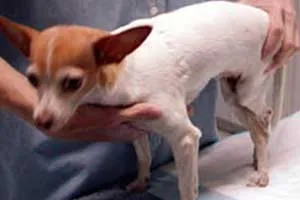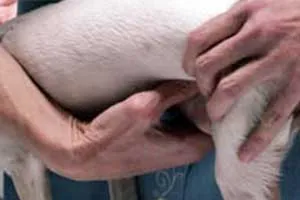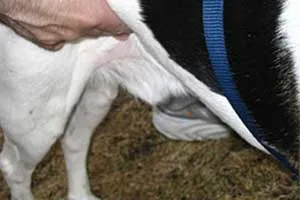Receiving the news that your beloved dog has lost the ability to control their bladder can be distressing for any pet owner. Whether it’s due to an accident, injury, disease, or the natural process of aging, urinary incontinence can be a challenging condition. However, learning to manually express your dog’s bladder is a skill that, with patience and practice, can become a routine part of daily care, offering immense relief to your canine companion. This comprehensive guide will walk you through the techniques and considerations for effectively expressing your dog’s bladder, helping you confidently manage this aspect of their health.
Understanding Canine Bladder Expression
Bladder expression involves gently pressing on your dog’s bladder to help them empty it. This is a crucial skill for pet owners whose dogs cannot urinate on their own. It requires a calm approach and consistent technique. Develop your own method with your dog, using steady, even pressure and the same verbal command each time to create a reassuring routine.
One common issue that can arise when a dog has incontinence or reduced mobility is a tendency to struggle within their confined spaces. If your [puppy breaks out of crate](https://dogcarestory.com/puppy-breaks-out-of-crate/) due to discomfort or an urge to relieve themselves, managing their environment alongside bladder expression becomes even more important.
Step-by-Step Guide to Expressing Your Dog’s Bladder
Locate the bladder: Gently perform ‘test squeezes’ on different spots, starting where the ribs end and moving backward, until you identify the bladder. Your thumb should be on one side of the abdomen and your fingers on the other.
 A person's hand gently palpating a dog's abdomen to locate the bladder for expression
A person's hand gently palpating a dog's abdomen to locate the bladder for expressionApply gentle pressure: Gently squeeze your thumb and fingers together. Observe if urine is released. If not, shift your hands to a slightly different area on the bladder and try again.
Watch for cues: Your dog may lift their tail when the correct spot is squeezed and pressure is applied, indicating that you have found the right area.
 Close-up of a dog's hindquarters with its tail slightly lifted as a hand expresses its bladder
Close-up of a dog's hindquarters with its tail slightly lifted as a hand expresses its bladderConfirm urine flow: Urine should be released in a fairly steady stream. When the flow diminishes to a dribble, the bladder has been sufficiently expressed. This process is not painful for your pet; in fact, it often brings significant relief.
Techniques for Different Dog Sizes
The approach to bladder expression can vary slightly depending on your dog’s size.
Expressing a Medium or Large Sized Dog
For medium to large dogs, an effective technique involves specific hand placement to ensure adequate pressure.
- Position your hands: Place your hands on the dog’s sides, just behind the rib cage. Rest your thumbs lightly on the dog’s back for stability.
- Apply pressure: Apply steady, gentle pressure by squeezing inward and upward. It’s crucial not to put direct pressure on an injured spine, especially if your dog has disk disease, as this could cause further harm.
 A person's hands positioned on the sides of a medium to large dog, preparing to express its bladder
A person's hands positioned on the sides of a medium to large dog, preparing to express its bladder - Continue and reposition: If your hands become fatigued, take a brief pause to rest before resuming. As the bladder empties and shrinks, you may need to adjust your hand position to maintain effective pressure. Continue until the bladder is completely empty.
Supporting Disabled Dogs with Bladder Expression
Disabled dogs often require additional support during bladder expression. A wheelchair or mobility cart can be highly beneficial for this purpose, serving a dual role as both a mobility aid and an expressing station.
- Hand placement: With the dog supported, reach under their body to place your hands on their waist, just in front of the thighs.
- Locate and squeeze: Try to feel the bladder by gently pressing into the sides with your fingertips. Once located, squeeze your hands together to begin the expression process.
 A person expressing the bladder of a disabled dog comfortably supported in a dog wheelchair
A person expressing the bladder of a disabled dog comfortably supported in a dog wheelchair - Observe and repeat: Pay attention to how far the waist is pushed in as the dog is expressed. Express, rest, and repeat this cycle until no more urine is produced. Ensuring proper containment and preventing escapes, like
[how to stop a dog from breaking out of crate](https://dogcarestory.com/how-to-stop-a-dog-from-breaking-out-of-crate/), becomes secondary when addressing immediate physical needs like bladder relief.
Creating an Expressing Station
For large, heavy dogs, or situations where one person needs to express the bladder alone, an expressing station can be incredibly helpful. A dog wheelchair or cart works well, but you can also create custom setups.
One pet owner devised a simple expressing station on their back porch using a small metal hook, a clothesline, and small pulleys. A clip was attached to one end of the line, which then clipped into the dog’s walking harness. By stepping on the line to hold it steady, the owner could use both hands to express the bladder.
 A simple DIY dog bladder expressing station set up outdoors using a clothesline and harness
A simple DIY dog bladder expressing station set up outdoors using a clothesline and harness
Another owner engineered an expressing station using a two-leg ladder, a bar, and a sling. Nails were placed at various points along the bar to adjust the sling’s height. The dog was helped into the sling under the ladder, the bar was threaded through the sling handles, and then rested on the ladder steps. This allowed the owner to use both hands freely. Such setups make the five-minute process much easier for a single individual. It can also help manage a dog’s anxiety, preventing behaviors like [how to stop puppy from jumping out of pen](https://dogcarestory.com/how-to-stop-puppy-from-jumping-out-of-pen/) when they are feeling confined or uncomfortable.
Using Fists for Enhanced Pressure
Some individuals, particularly those who may find it challenging to apply sufficient pressure with just their fingertips, discover that using fists is more effective. You can make a fist with each hand and use the open face of the fist (thumbs pointing forward) or knuckle-to-knuckle (thumbs pointing towards yourself). Using the entire fist distributes more pressure over a larger area, which can be necessary, especially at the beginning of the process.
Firm, consistent pressure is key. Once your dog starts to urinate, the process often becomes easier. Express as much as you can, pause for a moment, and then repeat the action multiple times within each session. It’s often only possible to feel the bladder accurately when it is not abnormally distended. Find the spot that works best for your dog and repeat these actions numerous times in each session to ensure complete emptying.
Stimulating Urination: A Temporary Alternative
While manual bladder expression offers the most control over emptying the bladder, external stimulation of the genital area can be a temporary or emergency method to encourage urination for some pets. This technique mimics how a mother cat stimulates tiny kittens. However, unlike expression, external stimulation relies on the pet’s ability to empty their bladder on their own, which means you have less control over the completeness of the void. This method may also result in the pet urinating on your hand, which typically doesn’t happen with proper manual expression.
If you are struggling to express your pet’s bladder properly after a veterinary demonstration, do not hesitate to ask for another lesson. In situations where your pet’s bladder urgently needs to be emptied and you haven’t been shown how to express or catheterize, external stimulation can provide temporary relief until you can consult with your veterinarian.
Conclusion
Learning to help your dog pee, particularly through bladder expression, is a vital skill for managing canine urinary incontinence. It requires patience, a calm demeanor, and a consistent approach, but it quickly becomes a manageable part of your daily routine. By understanding the techniques for different dog sizes, utilizing expressing stations when needed, and knowing when to use alternative methods or seek veterinary guidance, you can provide comfort and maintain the health of your beloved companion. Always consult with your veterinarian for personalized advice and demonstrations to ensure you are performing bladder expression correctly and safely for your dog’s specific needs.


 Close-up of a dog's hindquarters with its tail slightly lifted as a hand expresses its bladder
Close-up of a dog's hindquarters with its tail slightly lifted as a hand expresses its bladder A person's hands positioned on the sides of a medium to large dog, preparing to express its bladder
A person's hands positioned on the sides of a medium to large dog, preparing to express its bladder A person expressing the bladder of a disabled dog comfortably supported in a dog wheelchair
A person expressing the bladder of a disabled dog comfortably supported in a dog wheelchair